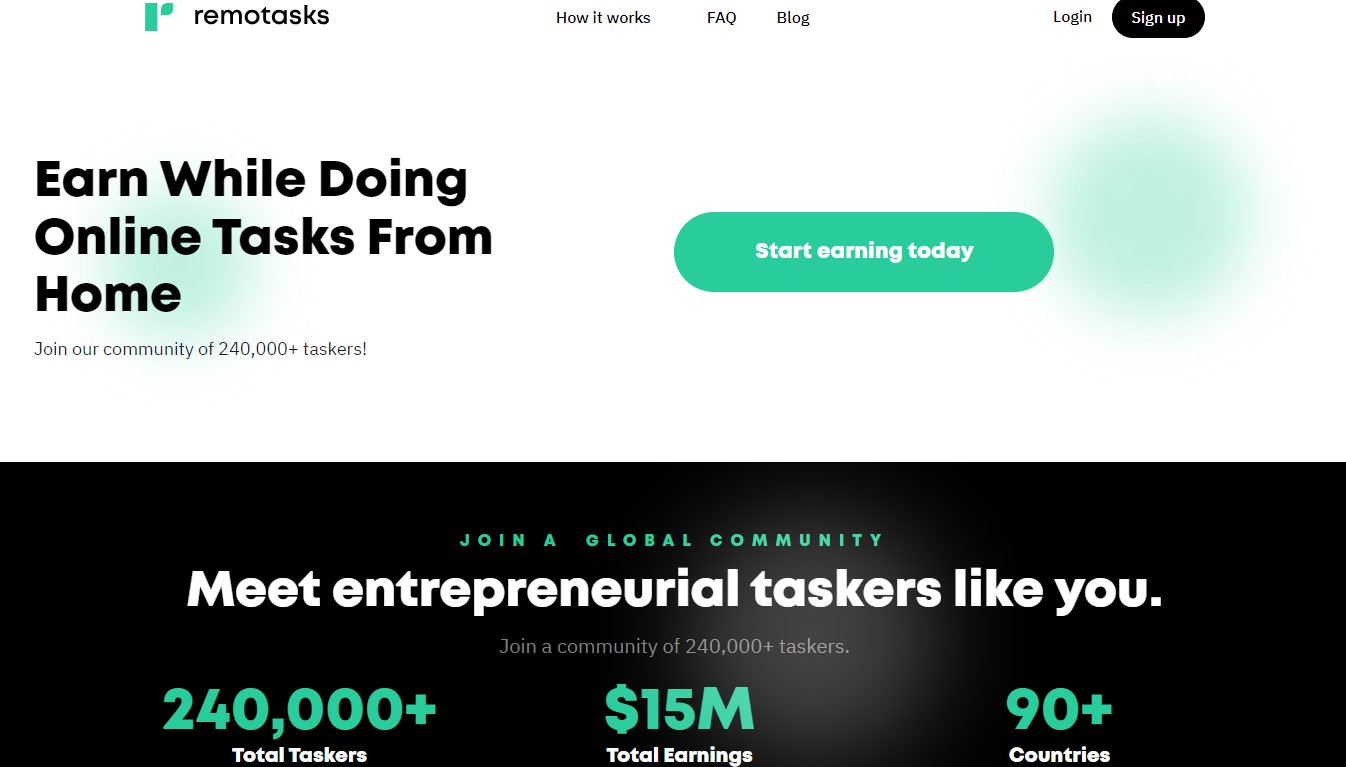Unfolding Truths And Rising Concerns On Digital Sweatshops
With the AI boom, digital sweatshops are on the rise. Learn about the ethical challenges in the online job market and the unsettling reality of online work.
Author:Gordon DickersonReviewer:Darren McphersonSep 11, 202342K Shares1.1M Views

While we marvel at the technological wonders that connect us globally, a growing concern emerges: the rise of digital sweatshops.
These clandestine operations are far removed from the traditional image of sweatshops but share an unsettling commonality – the exploitation of vulnerable workers.
In this eye-opening article, we delve deep into the world of digital sweatshops, shedding light on the hidden realities, the human cost of convenience, and the urgent need for ethical reform in the digital age.
What Is A Sweatshop And Why Is It Bad?
A sweatshop is a term used to describe a workplace, typically in developing countries, where workers face harsh and exploitative working conditions.
Such workers are often in these industries:
- garment
- electronics
- manufacturing
According to DoSomething.org, in the U.S., if a factory violates two or more labor laws, the Department of Labor will classify that factory as a sweatshop.
a. Low Wages
Sweatshops typically pay workers extremely low wages, often well below the minimum wage set by the government.
Workers are often forced to work long hours, sometimes in excess of 12-16 hours a day, without adequate compensation for overtime.
This violates labor laws designed to ensure fair compensation for workers.
c. Unsafe Working Conditions
Many sweatshops have inadequate safety measures in place, leading to a high risk of accidents and injuries.
Workers may be exposed to:
- dangerous chemicals
- poorly maintained machinery
- cramped, unsanitary conditions
d. Violation of Workers’ Rights
Sweatshops frequently violate labor rights, including the right to form labor unions and collectively bargain for better working conditions.
Workers are often afraid to speak up or organize for fear of losing their jobs.
e. Child Labor
In some cases, sweatshops employ children, subjecting them to labor at an age when they should be in school and enjoying a safe and nurturing environment.
f. Health Concerns
Poor working conditions in sweatshops can lead to various health problems for workers.
According to a 2019 paper published in the Journal of Environmental Psychology, sweatshop workers suffer from mental health problems in the form of:
- anxiety
- stress
These two can make those workers to:
- undergo depression
- attempt suicide
- inflict violence
In another 2019 paper, this time published in BMC International Health Human Rights, female sweatshop workers in a garment factory in Bangladesh suffered from various health problems, such as:
- eye pain
- back pain
- joint pain
- a nagging headache
Those exposed to fabric dust complained of difficulty in breathing.
According to the paper, workers likewise “feel permanently tired” because of these factors:
- poor and/or insufficient lighting
- same sitting position held for hours
- no back rest while sitting
- the non-stop noise produced by several machines
The journal Pacific Health Dialog also published a paper in 2006 about the health conditions of the same kind of workers in the same industry but only this time in Fiji.
According to its abstract, the Fijian women in this South Pacific country working in sweatshops suffered from the following:
- bladder problems
- body pains
- depression
- kidney problems
- obesity
Most of them also got occupational fatigue, also known as work-related fatigue or job-related fatigue.
Most of them also got occupational fatigue, also known as work-related fatigue or job-related fatigue.
g. Cycle of Poverty
The low wages paid in sweatshops often perpetuate a cycle of poverty, as workers struggle to meet their basic needs, let alone save for their future or their children’s education.
h. Global Economic Inequality
Sweatshops are often part of global supply chains, with multinational corporations outsourcing production to countries with cheap labor.
This can exacerbate economic inequality between developed and developing nations.
i. Ethical and Moral Concerns
Many people find the exploitation of vulnerable workers in sweatshops morally objectionable. They believe it reflects poorly on the companies and consumers that support such practices.
UNITE HERE, a people’s movement with offices in New York and Canada, made a report that exposed the horrendous working conditions in sweatshops - from Los Angeles to Honduras.
In U.S. Retailers: Responsible for the Global Sweatshop Crisis (2001), the public learned:
- how sweatshop workers were treated “like dogs”
- how the poor compensation started “the circle of debt” for them
- how “men [those running the sweatshops] made holes in bathroom dividers to peep on female workers
Former sweatshop worker Marie Mejia talked about the terrible time she had in a garments factory in Guatemala:
“„We had to drink tap water from dirty, greasy cups. The bathrooms didn’t have doors. They [the people manning the sweatshops] gave us food that made us sick. I got parasites while I was there.- Marie Mejia
She added how she got sick:
“„The material that we sewed was like cat hairs. You’d have it all over your face and in your pores. Both my sister and I started to get throat infections.- Marie Mejia
Efforts have been made by various organizations, governments, and consumers to address these issues by:
- advocating for fair labor practices
- improving working conditions
- promoting responsible consumer choices
These efforts aim to ensure that workers are treated fairly, paid decent wages, and provided with safe and humane working conditions, ultimately striving to eliminate the existence of sweatshops.
AI Boom
What does artificial intelligence (AI) have to do with digital sweatshops?
The AI boom refers to the rapid and significant growth of artificial intelligence technologies and applications in various industries and sectors over the past few decades.
This phenomenon has been characterized by:
- advancements in AI research
- increased investment
- the integration of AI into everyday life
It changed the way people interact with technology and has the potential to reshape industries and societies in the years to come.
While it offers tremendous opportunities for innovation and growth, it also comes with challenges related to ethics, regulation, and ensuring that the benefits of AI are accessible to all.
Speaking of ethics - that branch of philosophy that deals with questions about what is morally right and wrong - the AI boom contributed to the creation of another kind of sweatshop.
So, again, what’s the connection between the AI boom and the digital sweatshops?
According to the 2019 paper from BMC International Health Human Rights journal, back in the ‘80s, industrialization hit Bangladesh big time.
Various job opportunities poured into this South Asian country as trade expanded.
The nation’s manufacturing industries were some of the sectors that benefited most from industrialization. As the demand for garments and textile clothing soared, it all eventually led to the creation of sweatshops.
The same thing, albeit with the involvement of high technology, happened during the AI boom.
International and huge companies have joined the race to get the most out of this technology.
If the industrialization of Bangladesh indirectly caused the swelling number of sweatshops there, the AI boom indirectly affected the prevalence of the so-called digital sweatshops.
Digital Sweatshops
Digital sweatshops, aka electronic sweatshops, refer to situations where workers, often in low-income countries, are employed in low-paying and exploitative online jobs.
These jobs typically involve repetitive and monotonous tasks - often for extremely low wages - such as:
- data entry (inputting information into computer systems or databases)
- content moderation (monitoring and managing online contents)
- online surveys
In 2009, Professor Jonathan Zittrain, who teaches International Law at Harvard Law School, wrote for Newsweek about how he viewed the internet as a sweatshop creator.
A digital sweatshop at that one. Note, too, that this was a decade before artificial intelligence exploded.
Professor Zittrain first acknowledged the power of the internet to help people, particularly when nature strikes.
He cited the Hurricane Katrina incident (August 23-31, 2005) - “the costliest hurricane to ever hit the United States,” as dubbed by the U.S. National Weather Service - as a testimony to his claim.
As the hurricane wreaked havoc on New Orleans, the Red Cross organized a help hotline. Given the scope of the devastation, calls soon overwhelmed the organization.
The Red Cross sought the services of LiveOps. This Arizona-based contact center company accepted the challenge and provided 300 call agents to entertain calls.
LiveOps accomplished the task in just three hours. Soon, those agents handled over 17,000 calls.
Based on this amazing feat, Prof. Zittrain, who also co-founded Harvard University’s Berkman Center for Internet & Society, concluded:
“„This success story . . . is an example of a new phenomenon: using the Internet not just to aggregate and access computing power, but also to find and direct brainpower.- Professor Jonathan L. Zittrain
According to him, when brainpower (humans) and computing power (machines/computers) work harmoniously, one result would be job creation.
During the time he was writing that Newsweek article, he mentioned cloud computing being a huge thing.
Cloud computing refers to the delivery of various computing services over the internet, often referred to as “the cloud.”
Companies offering cloud computing services sprouted and endorsed the idea of “cloud labor.”
He noted how computers still can’t do certain tasks. That’s why human labor is still needed. People help computers process things. That kind of help translates to online work or cloud labor.
And, in Prof. Zittrain’s opinion:
“„It could also usher in a new era of digital sweatshops.- Professor Jonathan L. Zittrain
He likewise described this cloud labor as “radical” as how it functions is akin to “a pyramid of sorts.”
Those at the top of the pyramid are the companies - the online labor markets - invested in it and the top experts they employ.
Who is at the middle part of the pyramid? Workers the kind of whom LiveOps can easily get.
LiveOps label these workers as “contractors” because they’re neither official nor regular employees. They do online work. Or answer calls (just like those who got hired during the onslaught of Hurricane Katrina).
Workers at the bottom of the pyramid handle tasks that computers can’t do. Some of them, for example, would get $1 for accomplishing an online task.
For Prof. Zittrain, the internet can still be praised for the job opportunities it creates. However, numerous labor issues can arise from online contracting.
Online contracting refers to the process of creating, negotiating, and executing contracts using digital tools and technologies over the internet.
Prof. Zittrain pointed out that these online labor markets capitalizing on online contracting are simply digital sweatshops.
Consider this likely scenario:
If, for example, LiveOps will find a problem with labor laws because of online contracting, it can just cease hiring its contractors in a particular state and just look for contractors in other states.
No sweat.
Fast forward to the time of the AI explosion and digital sweatshops popped up across the world.
China Labor Watch found Foxconn, an electronics company with Amazon, Apple, and Huawei as clients, guilty of, among others:
- child labor
- forced and excessive overtime
- poor working conditions
The Guardian reported in 2016 how disaster-stricken areas (like New Orleans in 2015) become prone to digital sweatshops.
As humanitarian aid will need technology to speed things up, the companies behind such technology will need workers to make it happen.
Usually, those who get hired are the disaster victims - the residents, themselves, who may have lost their livelihood and need money ASAP.
Expectedly, as problems get resolved and the disaster is over, such jobs will be on a short-term basis only.
Digital Sweatshops In The Philippines
In the Philippines, in the aftermath of typhoon Haiyan, those who accepted short-term contract jobs in digital sweatshops found them to be “emotionally draining,” according to The Guardian.
Work can be monotonous and dull, too.
The digital sweatshops, however, stayed long after the skies turned clear again.
In August 2023, The Washington Post revealed in a reporthow they thrived in this Southeast Asian developing country.
Approximately no less than two million Filipinos work in digital sweatshops. An estimated 100,000 of them earn from Remotasks.
Founded in 2017 and headquartered in San Francisco, Remotasks is a platform that offers remote work opportunities to individuals who perform various tasks that require human intelligence.
It's essentially a crowdsourcing platform that connects businesses and organizations with a distributed workforce of remote workers who can complete tasks that are difficult for computers to automate.
According to its website, as of this writing, Remotasks has approximately 240,000 “Taskers” from 90 countries.
Thirty-four Filipino “Taskers” out of the 36 interviewed by The Washington Post said that when it comes to payment, three things can happen:
- it gets delayed
- it gets cancelled
- it’s lower than the amount you calculated to receive
Worse, one may not get paid at all.
Taskers said that delayed payments, per their supervisor’s reasoning, can either be attributed to mistakes in one’s work or missed deadlines. They can also happen without any reason given to them.
The worst part? Further questions regarding payment issues can lead to a Tasker’s account deactivation. That means no work anymore.
A day’s earnings could fetch somewhere between $6 and $10. See the table below for sample payments:
| Number of Hours Worked | Payment Promised vs. Payment Given |
| four hours | $2.00 became 30 cents |
| three days | $50 became $12 |
| unspecified accumulated hours | $150 became $0.00 |
The country’s secretary of the Department of Information and Communications Technology, Ivan John Uy, told The Washington Post that the kind of work offered by Remotasks belong in the country’s “informal sector.”
Remotasks - based on the disclosures of former Filipino “Taskers” - appears to be one of those digital sweatshops mostly operating in developing countries.
Unfortunately, in the Philippines, Secretary Uy admitted that platforms like Remotasks are not regulated in the country.
According to the report, Filipinos started to work for Remotasks in 2017. It became a popular source of income during the COVID-19 pandemic.
The seemingly exploitative labor practices of Remotasks perpetuate in the country because it knows that employment can be a struggle for several Filipinos, particularly in the provinces.
Former “Tasker” Philip Alchie Elemento, 37, from Mindanao, accepted that painful truth.
“They [Remotasks] know we don’t have a choice,” he said.
ChatGPT Human Contractors
OpenAI’s ChatGPT (Chat Generative Pre-trained Transformer) is a computer program powered by artificial intelligence that can have text-based conversations with people.
Simply put, it’s a virtual chatbot or AI chatbot by an American company co-founded by multibillionaire Elon Musk.
Human contractors from around the world set ChatGPT in motion, and in January 2023, Aljazeera reported how this digital innovation created digital sweatshops.
The report cited a Time magazine article, published in the same month and year, that exposed how human contractors from Kenya received less than $2 per hour of content moderation.
Content moderation is the process of monitoring and managing user-generated content on digital platforms. This work involves identifying and removing content that promotes discrimination, hatred, or harm.
Compare that 2-dollar-per-hour compensation of ChatGPT human contractors in Kenya to those in the U.S.
In an August 2023 article published by the JASON Institute for Peace and Security Studies in the Netherlands tackling digital sweatshops, it quoted Mark Graham, a professor of Internet Geography at the Oxford Internet Institute, as saying:
“„When we use Facebook or do a Google search, we have no idea what kind of human labor is behind those clicks or those uploads, what kind of people are sitting in content moderation farms in the Philippines.- Professor Mark Graham
Not only in the Philippines and in Asia but also in other developing countries in Africa and Latin America.
People Also Ask
What Countries Are Sweatshops Most Common In?
The include the following:
| Bangladesh | India |
| Cambodia | Indonesia |
| China | the Philippines |
| Guatemala | Sri Lanka |
What Brands Are Using Sweatshops?
In 2023, according to Panaprium, a site promoting ethical and sustainable fashion, these brands still use sweatshops:
| Aeropostale (U.S.) | Nike (U.S.) |
| Adidas (U.S.) | Primark (Ireland) |
| ASOS (U.K.) | Uniqlo (Japan) |
| Forever 21 (U.S.) | Urban Outfitters (U.S.) |
| GAP (U.S.) | Victoria’s Secret (U.S.) |
| H&M (Sweden) | Zara (Spain) |
In a 2011 report by The Guardian, these fashion brands used sweatshops:
| Banana Republic | Nike |
| DKNY | Puma |
| Levi’s | Ralph Lauren |
| Marks and Spencer | Speedo |
As for companies, per an article (updated in July 2023) by The Sustainable Living Guide:
| Apple | Hewlett-Packard (HP) |
| Dell | Microsoft |
| Tesla |
Who Is Fighting Against Sweatshops?
Below are six non-profit organizations working to eliminate sweatshops:
| Name | Year Founded & Country |
| American Federation of Labor and Congress of Industrial Organizations (AFL-CIO) | 1955 - U.S. |
| Clean Clothes Campaign | 1989 - the Netherlands |
| Fair Labor Association | 1999 - U.S. |
| United Nations International Labor Organization | 1919 - Switzerland |
| Worker Rights Consortium | 2001 - U.S. |
| United Students Against Sweatshops | 1998 - Canada and U.S. |
Final Thoughts
The rising concerns surrounding digital sweatshops serve as a stark reminder of the ethical and labor challenges posed by the rapid evolution of the digital economy.
As technology continues to progress, more and more people join the digital workforce. The exploitation and harsh working conditions they face should be addressed.
Failure to eliminate digital sweatshops may lead to further exploitation, inequality, and an erosion of the fundamental values that should underpin the digital age.

Gordon Dickerson
Author
Gordon Dickerson, a visionary in Crypto, NFT, and Web3, brings over 10 years of expertise in blockchain technology.
With a Bachelor's in Computer Science from MIT and a Master's from Stanford, Gordon's strategic leadership has been instrumental in shaping global blockchain adoption. His commitment to inclusivity fosters a diverse ecosystem.
In his spare time, Gordon enjoys gourmet cooking, cycling, stargazing as an amateur astronomer, and exploring non-fiction literature.
His blend of expertise, credibility, and genuine passion for innovation makes him a trusted authority in decentralized technologies, driving impactful change with a personal touch.

Darren Mcpherson
Reviewer
Darren Mcpherson brings over 9 years of experience in politics, business, investing, and banking to his writing. He holds degrees in Economics from Harvard University and Political Science from Stanford University, with certifications in Financial Management.
Renowned for his insightful analyses and strategic awareness, Darren has contributed to reputable publications and served in advisory roles for influential entities.
Outside the boardroom, Darren enjoys playing chess, collecting rare books, attending technology conferences, and mentoring young professionals.
His dedication to excellence and understanding of global finance and governance make him a trusted and authoritative voice in his field.
Latest Articles
Popular Articles


